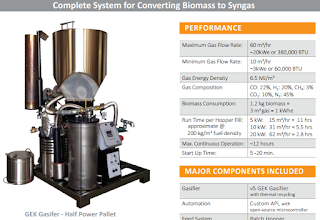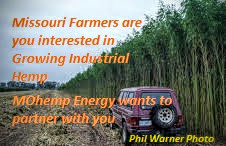Hearing focuses on Farm Bill rural development, energy programs @BiomassMagazine: On Sept. 28, the U.S. Senate Committee on Agriculture, Nutrition, and Forestry held a hearing on the 2018 Farm Bill focused on rural development and energy programs. The committee has now held nine hearings this year focused on Farm Bill development.
“Today’s hearing marks this committee’s ninth hearing this year dedicated to listening to our stakeholders from around the country on how our authorized programs are currently working, or need improvement, as we work towards Farm Bill reauthorization during this Congress,” said Sen. Pat Roberts, R-Kan., who serves as chairman of the committee. “This includes taking a look at spending requests and proposals for the 39 programs in the Farm Bill that do not have budget
baseline.”
“While it is a principal duty of this committee to ensure the next Farm Bill provides our nation’s agricultural producers with the necessary tools and resources to feed a growing and hungry world, our responsibilities, and the role of USDA, do not stop there, “ he said. “It is also critical the next Farm Bill works to support rural businesses, cooperatives, health clinics, schools, renewable energy and biobased product manufacturers, and other essential services providers that serve as the backbone of the communities our farmers and ranchers call home.”
In her opening statement, Sen. Debbie Stabenow, D-Mich., called the Farm Bill a jobs bill. “The rural development and energy titles that we’re discussing today have a wealth of opportunities to provide a bright future for rural America,” she said.
“In Michigan, agriculture and manufacturing are at the heart of our economy,” Stabenow added. “We don’t have a middle class unless we make things and grow things. That’s why we created opportunities in the last Farm Bill to support biobased manufacturing. Instead of using petroleum, companies are creating new products from American-grown crops. The economic benefit is twofold: new markets for our farmers, and new jobs and manufacturing opportunities for our businesses.”
“Additionally, the Farm Bill invests in renewable energy, which also leads to job creation, she continued. “According to a new report, there are now 92,000 clean energy jobs in Michigan alone. The popular Rural Energy for America Program – known as REAP – helps producers and businesses lower their utility bills through installing renewable energy systems and making energy efficiency upgrades. Innovations in advanced biofuels are helping us to become more energy independent and pay less at the pump.”
“It’s clear the opportunities we created in the 2014 Farm Bill are helping our small towns and rural communities create jobs and support communities where parents want to raise their children,” Stabenow said. “As we begin work on the next bill, I look forward to building on that progress to help rural America reach its full potential.”
Brent Shanks, director of the NSF Engineering Research Center for Biorenewable Chemicals at Iowa State University, was among those to offer testimony at the hearing.
In his testimony, Shanks said the current federal strategy for advanced biofuels could be enhanced by further decoupling the risks between technology, market and infrastructure inherent in completely new biorefineries. He said this approach would allow for progress to be made toward the overall goal while having important intermediate successes along the way.
According to Shanks, the previous two Farm Bills has included an increased discussion of the importance of incorporating renewable chemicals and biobased products for advanced biofuel production. The strategy has largely been positioned around the idea of higher-value renewable chemicals and biobased products subsidizing lower-value advanced biofuel production. “While achieving such a strategy would be a wonderful outcome, it actually increases the amount of overall technological risk because both advanced biofuel and renewable chemical technology would need to be developed in concert with one another,” said Shanks in his written testimony. “An alternative would be to also consider technology development with a near term focus on renewable chemicals that could be leveraged to technological needs for advanced biofuels.”
Shanks also noted that market viability risk mitigation needs to address the uncertainty of crude oil and natural gas pricing, which would require biomass-derived products to have valuations that are less tightly correlated to this pricing. “The best market-based approach for diminishing the correlation is to have biomass-derived products that are different from petrochemicals and that impart improved performance attributes in their use,” he said.
In addition, Shanks stressed that a crucial attribute in producing fuels and chemicals is the large capital infrastructure required for their manufacture. “Commercially, risk mitigation for biomass processing infrastructure can best be accomplished by adding on limited new equipment to an existing agricultural or wood processing facility or by co-locating the new manufacturing process next to (“across the fence” from) such an existing facility,” Shanks said. “This strategy is already happening in the industry.”
Ann Hazlett, assistant to the Secretary for Rural Development at USDA; Richard Davis, acting administrator of the Rural Housing Service at USDA, Chadwick Parker, acting administrator of the Rural Business-Cooperative Service at the USDA; Christopher McLean, acting administrator of the Rural Utilities Service at the USDA; Aleta Botts, executive director at the Kentucky Center for Agriculture and Rural Development; Elmer Ronnebaum, general manager of the Kansas Rural Water Association; Christopher Stephens, president and CEO of Coweta-Fayette EMC; Denny Law, CEO of Golden West Telecommunications Cooperative; and Mark Olinyk, president of Harvest Energy Solutions, also testified at the event.
A video of the nearly three-hour hearing can be viewed on the committee
website.
Thank You for stopping by the Green Blog. If additional information in needed or you have a question let me know by posting a question or comment. Together we can make a difference and create a future that will benefit everyone.












